Five Factors Will Shape the Post-COVID Workplace
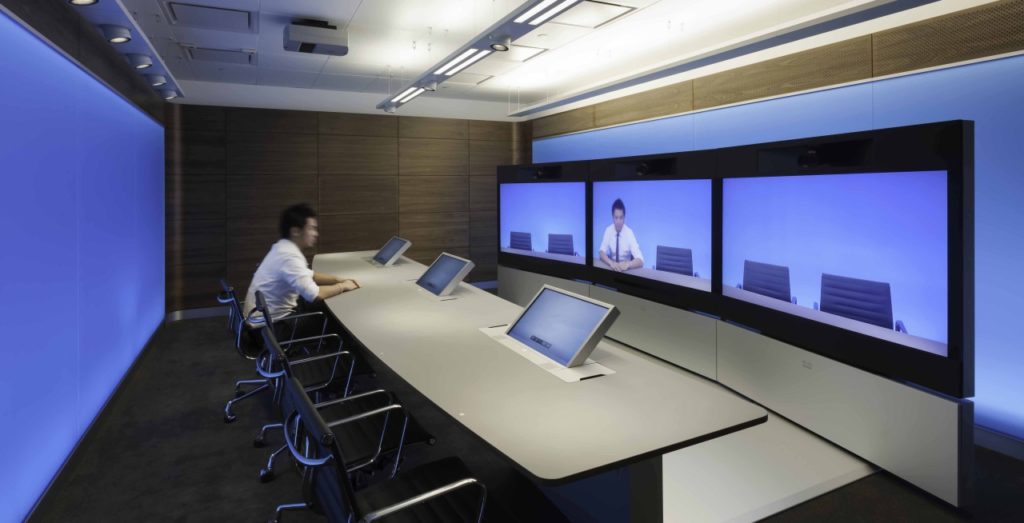
In the wake of nearly every epidemic in recorded history, urban planners, architects and engineers analysed the routes through which each pathogen spread, learned valuable lessons, and then reshaped our environment in sometimes dramatic ways to help prevent a recurrence, many of which ultimately became the new normal. Oddly enough, much of how we live and work in cities today has roots in disease transmission & epidemiology, and in the spatial, organisational and technological changes that flowed from it.
So it naturally follows that our workplaces too will come under scrutiny in the wake of the COVID-19 pandemic.
Here at One Space, we’ve been watching and analysing as the world reels under the virus’ spread. Here are some early findings and our forecasts on what a post-coronavirus workplace of the future might look like, organised around 5 topics that feature in the on-going global discussion about containing the virus:
1. Where to work & how to connect
The current global pandemic is often referred to in the media as the ‘World’s Largest Work-From-Home Experiment’. For many Asian city dwellers, the emphasis really will be on the word ‘experiment’. Our smaller home spaces, shorter commutes and the prevalence of multi-generation households make it, to many, less attractive and more difficult to work from home. Those living in modestly sized flats who find it challenging to concentrate in an open plan office will surely find it even harder to do so at home.
In any case, remote working may not end up being WFH. More likely, employers will be expected to offer employees more creative offerings of workpoints away from the crowds.
But will the coronavirus be a catalyst for lasting change?
For years, agile work and flexible work models have been changing the commercial real estate equation. Now, with remote working having undergone the most rigorous test imaginable in high cost cities around the world, we believe that organisations will once again recalibrate the per-headcount cost models on which they have traditionally relied, and will recognise IT & AV budgets as being vital to productivity.
“Already, the workplace strategy data we’ve gathered show that between 25% and 55% of workstations sit empty in many large offices, every day. Now imagine if even 1/3rd of the workforce opts to WFH for 2 days per week. “
For example, rather than focusing on the amount of office space needed to accommodate permanent headcount, there will be an effort to equip employees with the appropriate tools, security improvements, protocols and platforms for them to ‘work from anywhere’.
Already, the workplace strategy data we’ve gathered show that between 25% and 55% of workstations sit empty in many large offices, every day. Now imagine if even 1/3rd of the workforce opts to WFH for 2 days per week. So, if indeed there is an increased uptake of WFH practice in Hong Kong, then we will also most certainly require a reengineering of the workplace left in its wake.
What will the changes be?
In that regard, this ‘experiment’ will certainly cause us designers to revisit some of the most tried and tested workplace typologies. For example, the surge of interest in co-working facilities was seen as the ultimate ‘flexi-work’ solution, a compromise between a conventional office and the home. This led many corporates to install co-working-type areas into their own workplaces. But the primary complaint about some co-working offerings was that there was insufficient ‘Me Space’.
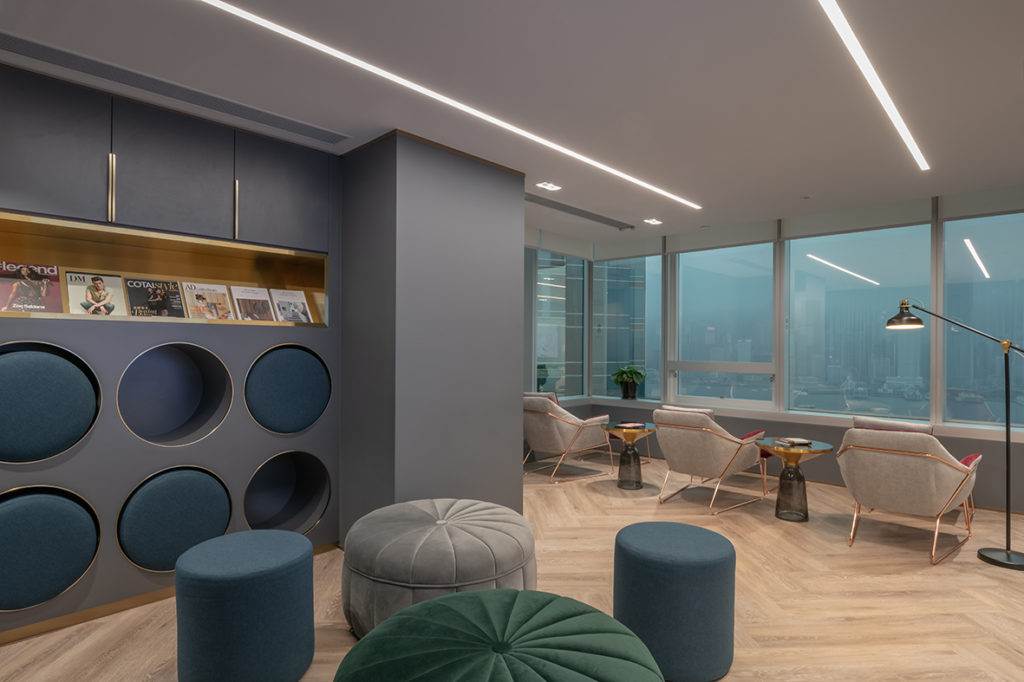
In fact, Bloomberg reported last year that the average space per workstation across WeWork’s global portfolio is about 5.1 square metres per desk – that’s 76% denser than Hong Kong’s statutory guideline for offices, which in turn is nearly twice as dense at the North American average. We envisage that the next generation of that model will need to address contagion-conscious social distancing and personal space, in addition to offering greater sheltering from noise and distractions.
Finally, we anticipate that technology readiness will take precedence over useable floor area as perhaps the biggest single shift in metrics for Corporate Real Estate decision-makers. In terms of investment, we envisage that the COVID-19 aftermath will place heightened demand on deployment of highly reliable, easy-to-use IT & AV tools as a key underlying asset towards business resiliency, productivity and staff well-being.
2. Teamwork, collaboration & socialisation
A key driver for an organisation to retain at least some open plan workspace is to support more fluid teamwork and to build esprit de corps. We believe that most every enterprise will continue, post-COVID, to value this, especially as the world continues to shift from a Knowledge-based to a Human-based economy.
“How can organisations and their people continue to enjoy the rich benefits of collaborative teamwork and agile workflow, without the incumbent wellness concerns of structured face-to-face interactions?”
But it stands to reason that in removing the physical barriers that can curtail teamwork, we might also be lowering our guard against potential airborne transmission of contagions.
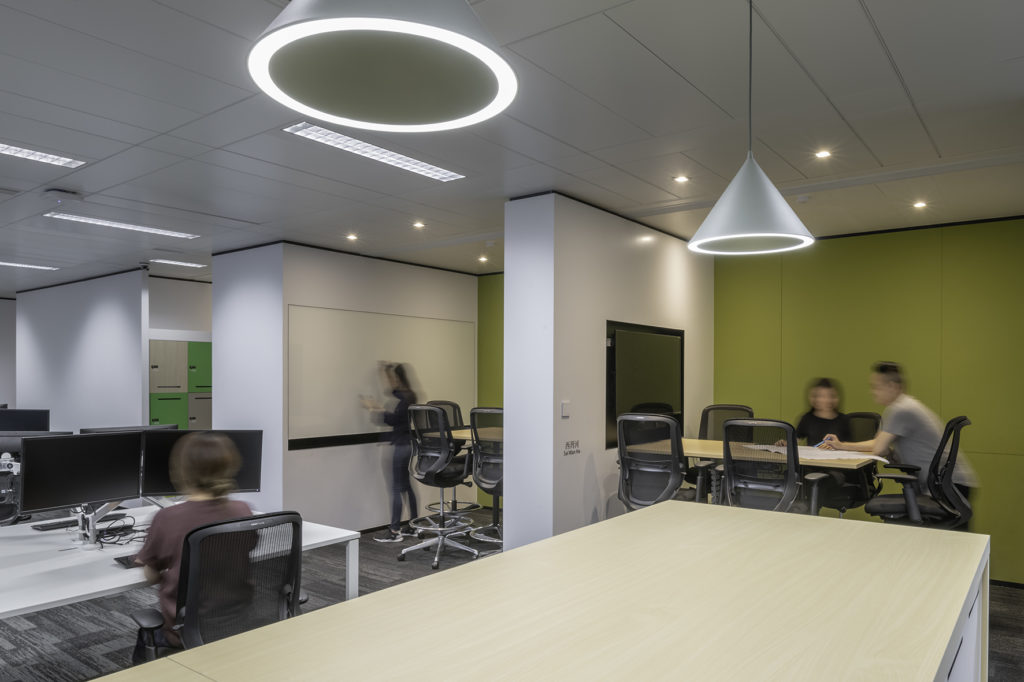
So the question will become: How can organisations and their people continue to enjoy the rich benefits of collaborative teamwork and agile workflow, without the incumbent wellness concerns of structured face-to-face interactions?
The role of technology
In response to the outbreak, teams are already adapting to non-colocated teamwork using newly refined virtual collaboration tools, as well as social media apps such as WhatsApp, WeChat and FB Messenger.
In order to achieve more productive connectivity with each other from a distance, the role that technology plays will become pivotal. To replicate the seamless flow of ideas when we are face-to-face, IT & AV tools will become more synergistic in their co-performance, placing the human experience firmly at the centre, by creating interconnected tools that are stable, intuitive and easy-to-use. And as users get more accustomed to using them, they’ll actually find that these tools can bring unexpected benefits to collaboration – such as real-time tracking of projects, single repository of shared documents, and multi-participant sharing of materials in virtual meetings – that face-to-face workflows often lack.
Our sister company Principle One has been at the forefront of the convergence of the IT & AV disciplines towards human-centric connectivity. They foresee that increased reliance on virtual collaboration modes will continue to demand higher and higher performance from these systems. Any weak link in the chain can result in an unsatisfactory user experience, requiring that hardware, software, network encryption & security, proprietary platforms (such as Webex, Zoom, Microsoft Teams, etc), and – vitally, bandwidth and signal resiliency – all co-perform to give a consistent and reliable experience. Users will need to become more knowledgeable about these tools and more imaginative about their potential, as well as demanding to have the right tools for the right tasks.
In the meantime, the ‘bricks-&-mortar’ workplace of the future will – if it is to have any valid purpose at all – still need to accommodate teamwork, and within that, the spectrum of human needs and behaviours.
‘Open Plan’ or ‘No Open Plan’?
“It is unlikely that fully open offices will succeed in providing the comfort and security of individuals that this virus has brought into the spotlight.”
It is difficult to predict the longer-term consequences of the COVID-19 outbreak on these behaviours. But it is unlikely that fully open offices will succeed in providing the comfort and security of individuals that this virus has brought into the spotlight. At the same time, we are aware of much research published over the years (including the frequently cited Harvard Business Review study) identifying numerous pitfalls to a fully open plan office – including inability to concentrate, uncontrolled interactions with others, and gaps in productivity.
Both for this reason and in direct response to the virus, our future ‘workscapes’ must be more variegated, ergonomic and rich with choices & personalisable features that surmount those pitfalls.
In order to drive positive behaviours in the workplace and meet evolving user expectations, we often recommend a ‘blended’ workspace – neither fully open nor fully enclosed – that accommodates the wide spectrum of human needs, ranging from full solitude to interactive engagement with others. Post-COVID, as participants are given the tools to choose their face-to-face interactions, alongside a suite of next-generation IT & AV tools that support virtual collaboration, our physical and virtual workspaces will begin to merge into a more unified environment for productivity.
3. Social distancing in the workplace
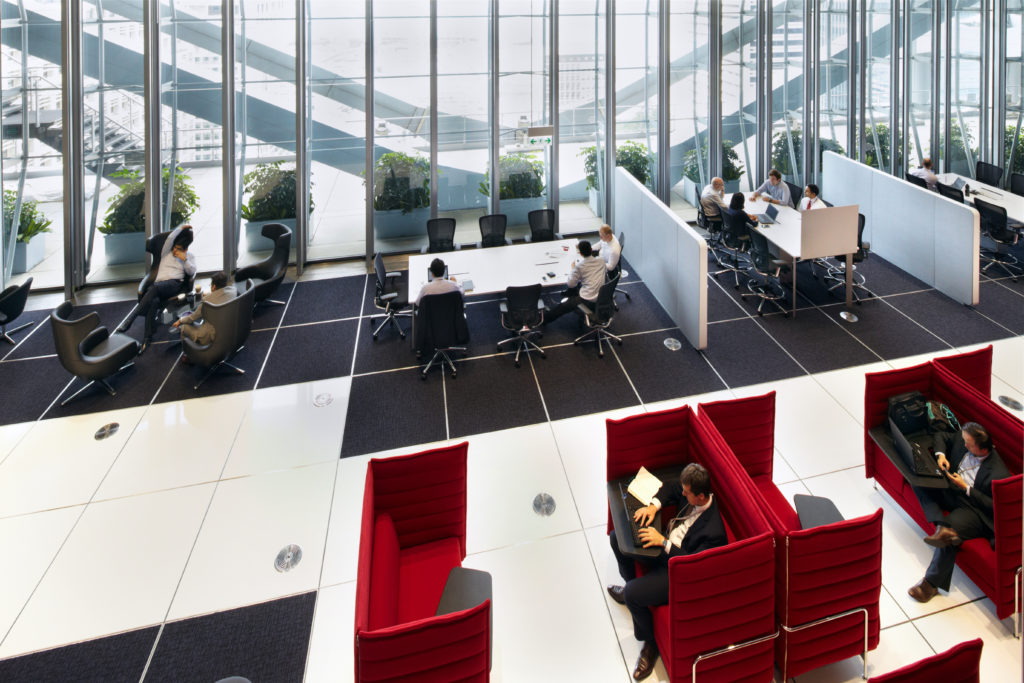
Social distancing guidelines advise a separation between seats of at least 1.5m, and it’s often mistakenly believed that higher density offices will ‘cram us in together’ in violation of that rule. In truth, even though most Asian offices (like most Asian cities) are nearly twice as dense (Hong Kong statutory guidelines recommend about 9 square metres per permanent headcount.) as their North American counterparts, our designers know from experience that we can readily achieve that social distancing within the prescribed density.
So what is the best way to achieve optimal distancing?
Irrespective of the virus, our years of behavioural research have helped us arrive at an optimised distance between workstations that balances the need for individuals’ focus on their tasks against their more fluid interactions with colleagues nearby.
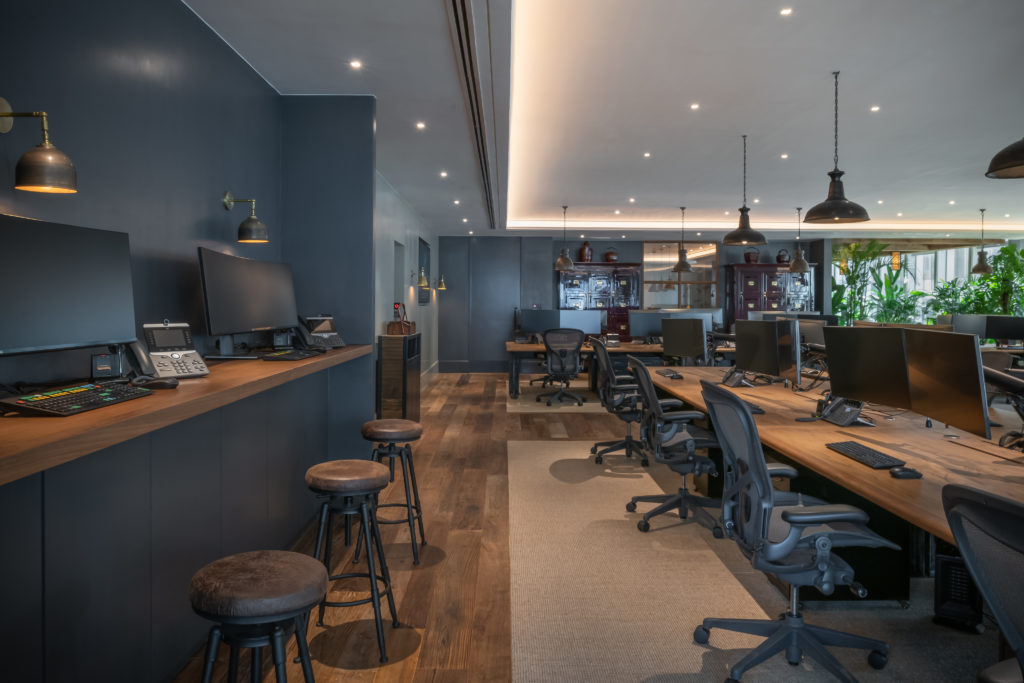
We also found that optimising the space between desks gives our designers sufficient scope to introduce other much-yearned-for staff amenities, including mindfulness rooms and wellness facilities. Consequently, the overwhelming majority of our projects over the past decade have adopted our recommended 1.5 to 1.8m distance between seats. In this case, at least, human psychology and epidemiology neatly align.
Owing to the high cost of commercial real estate, and because intelligent space planning can achieve social distancing norms, we do not foresee that clients will aim for lower aggregate densities than is permissible. We are also not likely to revert to the demoralising ‘cubicles’ of the 70s & 80s. We do, however, predict that shielded one-person alternative workpoints will gain currency, as will low-height ‘sneeze-screens’ between workstations.
User etiquette will be accompanied by AI
Informal collaboration relies upon basic human civilities to achieve appropriate social distancing. These are the unscheduled encounters we have at work that help build bridges of trust, alleviate friction and form team bonds. Will the COVID-19 outbreak change that behaviour in the longer-term?
In the end, etiquette will be the governor. One client asked us recently: “But how will we enforce these workplace behaviours?” The answer: Through give-&-take, office workers tend to become self-policing, establishing the parameters for what is acceptable. So, in regard to distancing, people will mostly find their own patterns within the social settings we design for them. Our job will be to give them the opportunity to do so.
“Etiquette will be the governor. One client asked us recently: ‘But how will we enforce these workplace behaviours?’ “
For example, the multi-purpose communal spaces we design are often planned to encourage staff to socialise, eat together and form informal bonds. But in the short term at least, dining in groups and/or sharing food is discouraged by health professionals. We may see less interest in the ‘communal’ table in the design of social hubs, or we may reposition them to make them less pivotal to the flow.
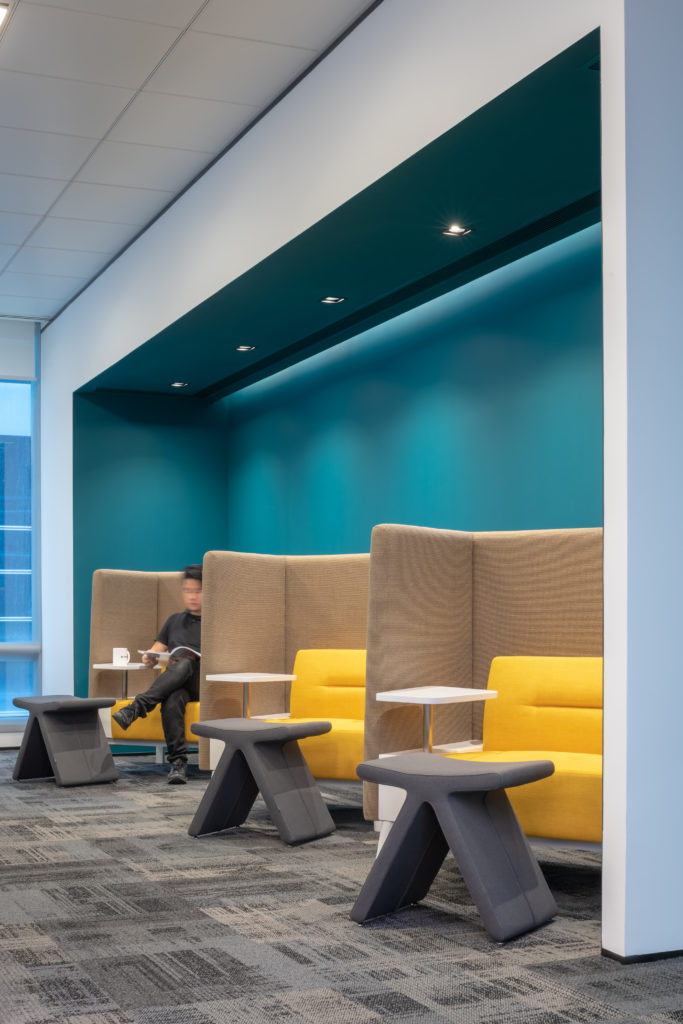
There will also certainly be more emphasis on hygiene in these facilities. And we might expect to see rising interest in 1-person shielded pod-type furniture settings as an antidote to shared seating.
Smartphones and AI will also play a role in helping staff find places that provide for social distancing in the workplace. Already, AI is capable of making flexible workpoints a more seamless experience by, for example, recognising via your smart phone calendar which project you are working on, from your GPS your location, and then directing you to a workpoint nearby your teammates. So AI could also help a user with a social distancing preference locate a workpoint in a less dense zone of the office, or to a shielded workpoint.
4. Transmitting contagions through touch
The daily journey of the typical office worker entails the need to touch countless surfaces along the way. COVID-19 has already heightened our awareness of the things we touch, and we believe that the habits we are adopting now will become embedded in the design of the world around us. The workplace of the future will use a combination of reducing the need to touch things, and applying advanced material nanotechnologies that actually inhibit the growth of microorganisms on surfaces.
Do I really want to share a desk, when contagions are all around us?
As remote work and WFH practices are more widely adopted, workspace flexibility will become an increasingly valuable part of a company’s real estate portfolio strategy, resulting in even more sharing of workstations, seating and other tools. In turn, this will mean greater potential for contagions to spread on surfaces that are touched by many users.
Where workpoints are shared, we already recommend that users have their own keyboard & mouse, stored in their personal locker, and that sanitising wipes are provided throughout the office to wipe down any shared equipment. This will become common practice, and we will be designing facilities to make this more intuitive.
“Numerous activity-based work settings around the office give users the opportunity to move around more freely, potentially allowing a contagious person to infect a larger swath of colleagues. This will need to be addressed.”
In addition, the so-called ‘activity based work’ (ABW) model, which entails task-specific workpoints & tools throughout the office, arguably might inadvertently promote transmission of contagions. The ABW principle is that people can choose to work in the setting that best supports their activity at that moment. Therefore, numerous settings around the office give users the opportunity to move around more freely, potentially allowing a contagious person to infect a larger swath of colleagues. This will need to be addressed.
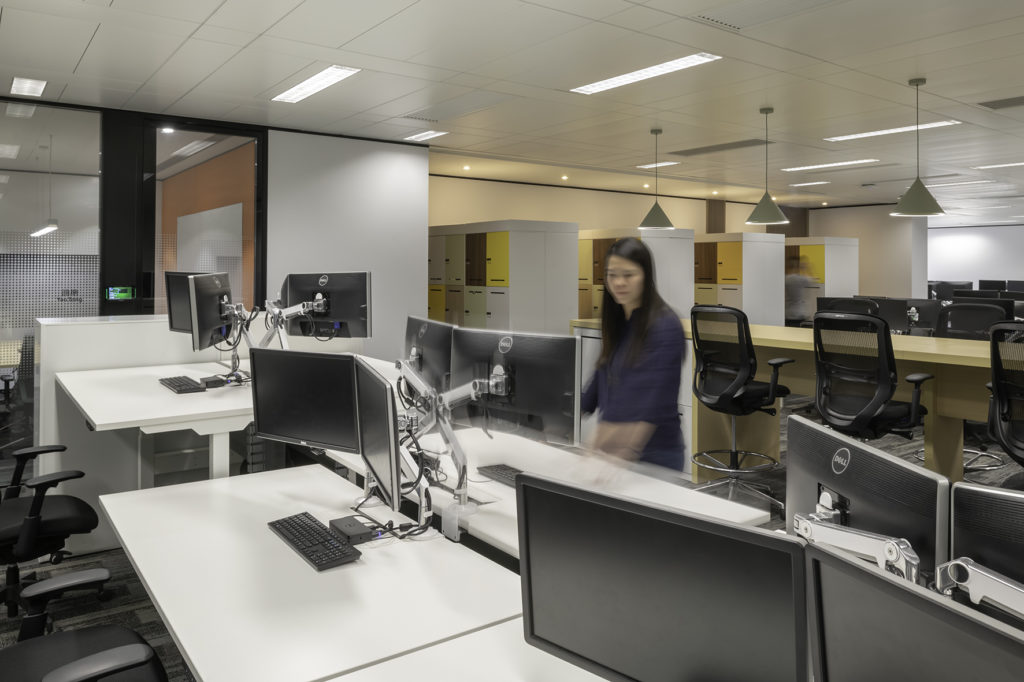
One way to mitigate this risk – just as we have learned to do in the larger community – is to limit the need to touch contaminated surfaces, to wash & sanitise our hands more frequently, and to avoid touching our face. Social Hubs & Water/Coffee Points, where communal traffic is highest and behaviours are at their most relaxed, will therefore come under added scrutiny. Our Pantry designs already aim to reduce potential germ-carrying touch-surfaces, such as rubbish & recycling bins, kitchen sink edges and microwaves. Touch-free devices, such as doors (including biometric access control systems), water dispensers & taps, will also play a role.
Meanwhile, antimicrobial textiles, which are already widely used in healthcare facilities, in protective clothing and in sportswear, with continuing technological advancements, will see exponential growth in the already strong APAC market. Such manufacturers will find ample opportunity in the office fit-out sector – for everything from carpeting to seating upholstery. Surface-applied nano-coatings and other antimicrobial material technologies will flourish. These latest materials and surface coatings can resist pathogens from growing on surfaces. Even an affordable, domestic-use spray-on antimicrobial nano-coating is being widely sold at the height of the epidemic. We predict we will be specifying more of these products and coatings as clients see the value of investing in them.
Technology steps in to do the dirty work
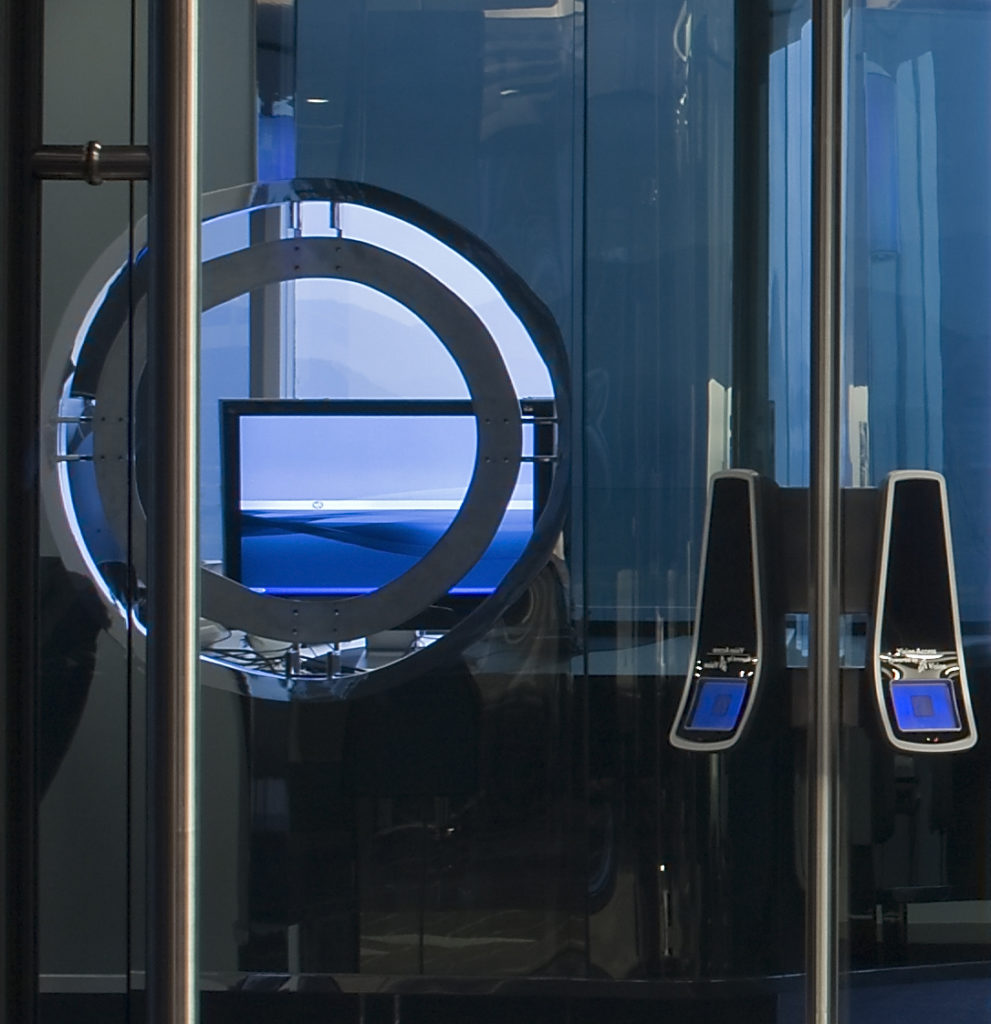
Access control systems, already linked into company databases, will potentially benefit from biometrics to reduce contact with door handles, one of the most insidious conveyors of contagions. In 2007, we specified a facial recognition main door access control system for a Canadian hedge fund client. 13 years ago, it was a cool gizmo. Going forward, we expect biometrics to become more commonplace, even if not for main security cordons.
The Internet of Things (IOT) will experience a resurgence of interest. Our smartphones, amplified by the power of AI & GPS, will anticipate our journey’s pathways and prepare them for us. IOT devices such as doors, lifts, washroom fixtures, light switches, window blinds, ventilation, etc. can all become touchless, controlled instead via apps. The question will be how much control employers and landlords are prepared to relinquish to individual users.
Smartphone-led IOT devices such as adjustable height workstations, already on the market, can recognise each user’s preferences and monitor his or her posture, controlled via smartphone to a pre-set, personalised ergonomic position. These apps could be extended to control every element of the agile workpoint, as well as lockers and lighting.
5. Personal hygiene & staff well-being
Prior to this pandemic, our clients had already shown admirable commitment to their staff’s well-being, and COVID-19 has brought heightened understanding of how to control contagions in the workplace, both through protocols and personal habits. The corporate real estate professions (including facilities managers) are already responding, as are international wellness experts.
CoreNet, the global corporate real estate network, has quickly and effectively mobilised its learning resources to help FM teams around the world cope with the impact of COVID-19 in the workplace. We also anticipate that the International WELL Building Institute, which has established a COVID-19 Task Force, will develop new guidelines and protocols as part of their WELL Certification. Post-COVID workplace users will demand much greater emphasis on hygiene and other safeguards. Attraction of talent will rely more on this factor, as it becomes apparent that employees’ families can inadvertently be put in harm’s way by workplace policies.
Did you wash your hands?
Frequent hand-washing and sanitising has been identified as perhaps the most important safeguard against casual disease transmission. As companies (like ours) now make hand-washing upon arrival compulsory, we envisage a case for designing a hand-wash station nearby the workplace entry point, if not the front door.
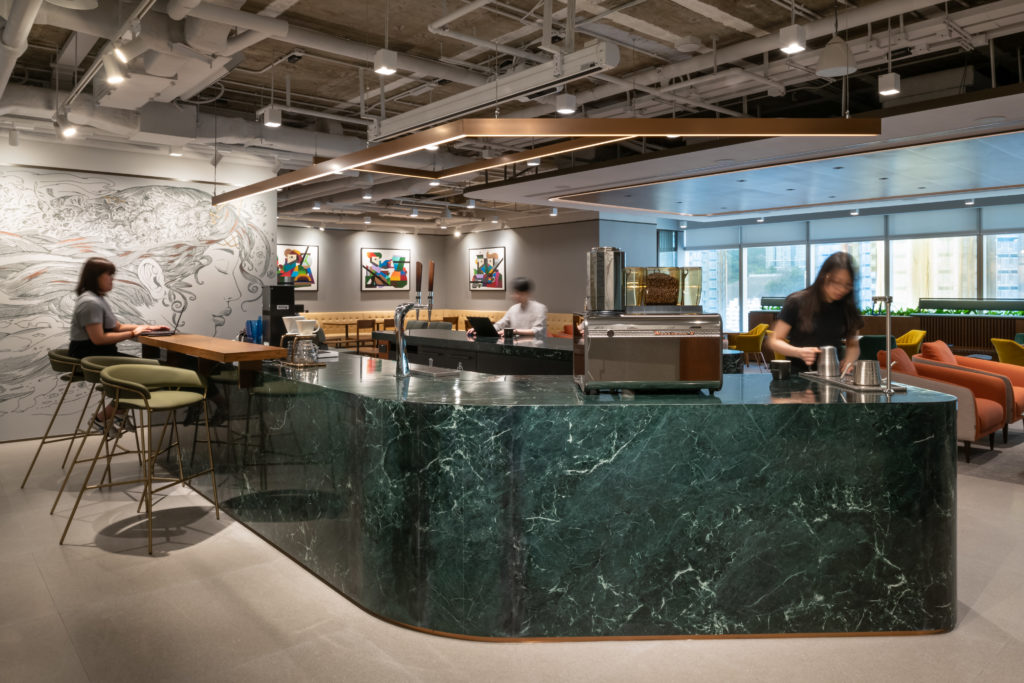
In fact, prior to the COVID outbreak, we’d been experimenting with some large-scale projects on positioning a ‘Town Square’ – a multi-purpose forum in which staff and visitors alike can connect, socialise and meet informally – at the point of arrival. This is not for every organisation, of course; but this ‘hand-washing-on-arrival’ ritual within a community space could rather pointedly communicate that this company’s top priority is the safety, health and well-being of its people.
As an extension to this, hand sanitiser stations will be within close proximity of every workpoint, near washrooms, pantries and in social hubs. Antiseptic wipes will be readily available where needed.
Concerns about indoor air quality will also rise. In the current COVID-19 environment, we are all more conscious that a sneeze can travel across the office, and some of our clients are already installing air purifiers in their open workspaces.
Landlords will be expected to deliver high quality air supply with ample fresh air mix. However, in most of Asia, owing to high outdoor air humidity, natural ventilation in office buildings is almost unheard of. We expect that the Building Services profession may be challenged with finding innovative base-building solutions that deliver higher quality air to office occupants.
Aside from ventilation being redesigned to avoid cross-contamination, staff must demonstrate personal etiquette. We have already begun to witness greater sensitivity surrounding this matter. In fact, because most adults in Hong Kong and China experienced the SARS epidemic of 2002-3, mask-wearing is deeply ingrained in our etiquette, and we showed rapid adoption of masks (even when asymptomatic) as soon as COVID-19 broke out. We expect no lapse in such etiquette in the office of the post-COVID world.
What’s next?
The novel coronavirus is proving to be one of the most contagious and deadly pandemics in modern history, wreaking havoc in families, communities and businesses. At the time of writing, just over 2.4 million cases have been confirmed worldwide, with countless others as yet undetected. Infections will continue to multiply, more lives will be lost, and the impact to the economy is incalculable. None of us is able, just yet, to know what the aftermath will look like.
Most certainly, the way we work, both independently and in teams, will be profoundly and indelibly altered by these events. As architects working in the Asia-Pacific region, near the outbreak’s epicentre, we are able to observe behavioural patterns in the workplace, map those against known epidemiological findings, and help design new ways of addressing the spread of contagions in offices and co-working facilities.
This article is but an early evaluation, with a few forecasts and ideas. We look forward to sharing more with our clients and friends as the situation evolves and – hopefully – the world is able to move on from this challenging era.
We would love to hear your thoughts and experiences. Feel free to get in touch.
Excerpts from this article were originally published in the South China Morning Post. See also The Guardian with quotes by One Space affiliate Scott Brownrigg. All photos feature projects by One Space.

